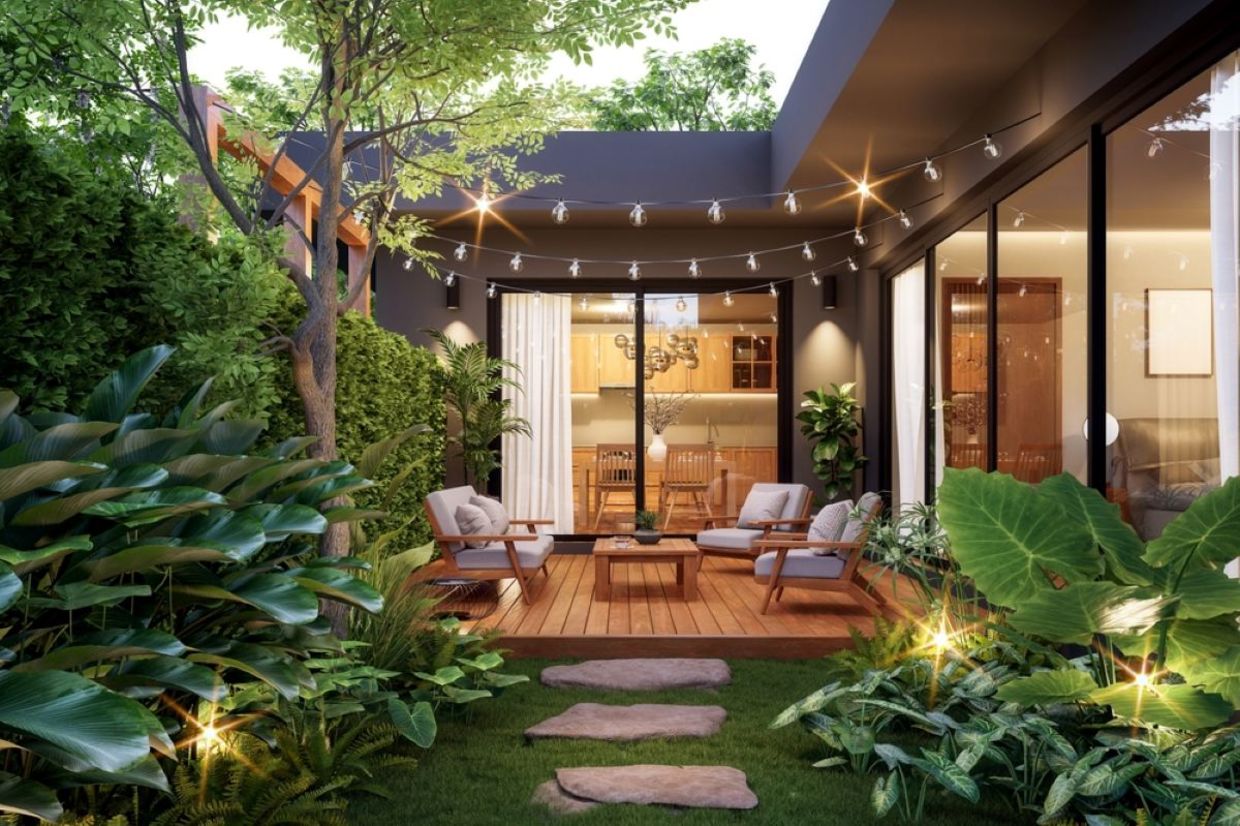
(onzon/ Shutterstock.com)
Retreating to a calm oasis after a long day’s work is a real pleasure. It’s the perfect way to engage your senses and find peace of mind.
You can enjoy this space and experience right outside your door by making a sanctuary garden. This popular gardening trend is ideal for escaping the busyness of everyday life and finding serenity, according to the gardening charity RHS. It’s also easy to create and doesn’t require professional landscaping or a large budget. Here are five ways to transform an outdoor space into a personal sanctuary.
Design for Privacy in Your Sanctuary Garden
Privacy is fundamental to any sanctuary garden, as feeling protected by one’s surroundings fulfills a human need for security. Creating boundaries can define your meditation space while blocking unwanted views and noise from the outside world.
Fences offer the quickest and most economical solution and can easily be covered with climbing plants for that natural feel. If your space is overlooked from above, add a trellis extension or plant fast-growing trees. Hedges provide privacy and help filter noise and pollution, making your garden sanctuary peaceful and healthy.
Attract Wildlife to Your Garden
Plants and wildlife offer opportunities for mindful observation and a powerful connection with nature. Watching a hummingbird hovering and butterflies fluttering among flowers can help you be present. To invite these natural visitors, incorporate plenty of wildlife-friendly plants in your garden design, recommends HGTV.
When possible, choose native plants that are adapted to your region, as these create a stronger sense of place and connection with the surrounding environment.
Use Color Schemes to Create Calm
Color plays a crucial role in setting the mood of a sanctuary garden, RHS suggests. Creating a calm, relaxing atmosphere starts with implementing a limited color palette. Green is a go-to color as it is naturally soothing. Incorporate various shades and textures of green with hedges, lawns, and topiary.
Complement these with subtle accents in a calm cream tone, including pale outdoor furniture. This restrained approach to color helps create an uncluttered visual experience that helps the mind to rest.
Incorporate a Special Place to Rest
No sanctuary garden is complete without thoughtfully designed spaces for sitting and reflecting. Include seating options in both sunny and shaded areas to ensure you enjoy your garden throughout the day and seasons.
Consider the views from inside your home as well. Strategically placing seating where it is visible from indoors is like a visual invitation to venture outdoors. These intentional resting spots transform your garden from a space you merely look at to one you can experience.
Create a Garden That Glows in the Moonlight
Design your garden with relaxing evenings in mind. You can even use a small balcony to plant evening bloomers with petals that reflect the moonlight, World Day recommends.
Having chamomile in your sanctuary garden, with its sweet apple scent, is a great way to create a unique multisensory experience that can lower stress. Chamomile, known as the moonlight daisy, also repels pests while attracting beneficial ones. Another good choice is lemongrass, a natural mosquito deterrent. Be sure to add some cosmos, a resilient plant with delicate flowers. As its fragrance is more intense at night, it will attract nocturnal pollinators to that special sanctuary garden nestled in a moonbeam.
Remember, you don’t need to travel to find a relaxing oasis — through these steps you can build one right in your backyard.
YOU MIGHT ALSO LIKE:
Design Your Life With the 7 Guiding Principles of Zen
5 Ways to Connect With Nature With Biophilic Design
7 Fun Facts About Spring Flowers to Make You Smile







